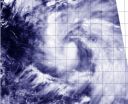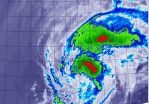(Press-News.org) Before undergoing heart imaging procedures involving radiation, healthcare providers should help patients understand why the procedure is needed and its potential benefits and risks, including risks related to radiation exposure, according to a new scientific statement in the American Heart Association's journal Circulation.
"With technological improvements, medical imaging has become an increasingly vital tool in diagnosing and treating patients with heart disease, but the rising use of the tests has led to increasing radiation exposure over the past two decades," said Reza Fazel, M.D., M.Sc., chair of the writing committee for the statement and cardiologist at Beth Israel Deaconess Medical Center in Boston. "Heart imaging procedures account for almost 40 percent of the radiation exposure from medical imaging."
Effective communication between patients and healthcare providers is important, especially among patients who may have an overstated fear of radiation. The statement recommends that before moving forward with an imaging test that uses radiation, clinicians should initiate a discussion with patients to address their questions and concerns, and openly discuss questions such as:
How will the test help diagnose or treat your my heart problem?
Are there other techniques to get the information without using radiation?
How much radiation will you be exposed to?
How could that affect your chance of developing cancer later in life, and how does that compare to the risk from other common activities?
"In general, the radiation-related risk of any imaging test to an individual patient is very small and, when the test is clinically appropriate, the benefits of the test typically far outweigh any potential risks," Fazel said.
With the exception of mammography, there is no federal regulation of radiation dose for medical tests, leaving the appropriate use of heart imaging in the hands of clinicians and imaging facilities. In 2009, the American Heart Association called for judicious use of the tests and gave general recommendations for their use. The current statement builds on that advisory by providing practical recommendations for enhancing radiation safety in heart imaging.
The new statement also provides guidance for training professionals who order or administer cardiac imaging tests.
According to the statement, clinicians ordering imaging tests should understand when each type of test is appropriate, the typical average radiation dose and the potential risks.
"Radiation-related risk is one of the factors that should be considered in the decision to use cardiovascular imaging with ionizing radiation, particularly in younger patients in whom the potential risk of radiation exposure is thought to be higher," Fazel said.
In deciding the best imaging method to use, the clinician should also consider the test's diagnostic accuracy, potential risks, availability, cost, and convenience.
The most commonly used heart and blood vessel imaging procedures using radiation are nuclear stress tests, cardiac CT (computed tomography) scans, and fluoroscopy (a real-time X-ray used to guide catheter and device placement during heart catheterization and tests for heart rhythm abnormalities). Echocardiography (ultrasound imaging of the heart) and cardiac magnetic resonance imaging do not expose patients to ionizing radiation.
Professionals who perform cardiac imaging should have adequate knowledge of contemporary methods of optimizing radiation exposure, which means imaging with the dose of radiation required to obtain high-quality images using best available methods and not significantly more than that. They should also know how to minimize radiation exposure to staff, according to the statement.
INFORMATION:
Co-authors are Thomas C. Gerber, M.D., Ph.D., co-chair; Stephen Balter, Ph.D.; David J. Brenner, D.Sc.; J. Jeffrey Carr, M.D., M.S.C.E.; Manuel D. Cerqueira, M.D.; Jersey Chen, M.D., M.P.H.; Andrew J. Einstein, M.D., Ph.D.; Harlan M. Krumholz, M.D., S.M.; Mahadevappa Mahesh, M.S., Ph.D.; Cynthia H. McCollough, Ph.D.; James K. Min, M.D.; Richard L. Morin, Ph.D.; Brahmajee K. Nallamothu, M.D., M.P.H.; Khurram Nasir, M.D., M.P.H.; Rita F. Redberg, M.D., M.Sc.; and Leslee J. Shaw, Ph.D., on behalf of the American Heart Association Council on Quality of Care and Outcomes Research and Council on Cardiovascular Radiology and Intervention.
Author disclosures are on the statement.
Additional Resources:
Children and heart tests that use radiation
Heart disease and stroke information
Follow AHA/ASA news on Twitter @HeartNews.
For updates and new science from the Circulation journal follow @CircAHA.
The American Heart Association/American Stroke Association receives funding mostly from individuals. Foundations and corporations donate as well, and fund specific programs and events. Strict policies are enforced to prevent these relationships from influencing the association's science content. Financial information for the American Heart Association, including a list of contributions from pharmaceutical companies and device manufacturers, is available at http://www.heart.org/corporatefunding
Radiation risks should be considered and discussed before heart imaging
American Heart Association Scientific Statement
2014-09-29
ELSE PRESS RELEASES FROM THIS DATE:
Study finds information lacking from FDA on implanted medical devices
2014-09-29
Information is lacking on most implanted medical devices cleared by the U.S. Food and Drug Administration despite a legal requirement that companies submit scientific evidence about the devices' substantial equivalence to other devices already on the market.
Under what is known as the 510(k) review, the FDA clears about 400 implanted medical devices without clinical testing each year for market that are considered moderate to high risk. The FDA has a process that requires the applicant to provide scientific evidence that the new device is "substantially equivalent" ...
AAN: Risks of opioids outweigh benefits for headache, low back pain, other conditions
2014-09-29
MINNEAPOLIS – According to a new position statement from the American Academy of Neurology (AAN), the risk of death, overdose, addiction or serious side effects with prescription opioids outweigh the benefits in chronic, non-cancer conditions such as headache, fibromyalgia and chronic low back pain. The position paper is published in the September 30, 2014, print issue of Neurology®, the medical journal of the American Academy of Neurology.
Opioids, or narcotics, are pain medications including morphine, codeine, oxycodone, methadone, fentanyl, hydrocodone or a combination ...
Use of broad-spectrum antibiotics before age 2 associated with obesity risk
2014-09-29
Bottom Line: The use of broad-spectrum antibiotics by children before the age of 24 months was associated with increased risk of obesity in early childhood.
Author: L. Charles Bailey, M.D., Ph.D., of the Children's Hospital of Philadelphia, and colleagues.
Background: Obesity is a major public health problem. Previous research suggests intestinal microflora may be associated with obesity, and antibiotic exposure may affect microbial diversity and composition.
How the Study Was Conducted: The authors used electronic health records spanning from 2001 to 2013 from ...
Healthy fats help diseased heart muscle process and use fuel
2014-09-29
Oleate, a common dietary fat found in olive oil, restored proper metabolism of fuel in an animal model of heart failure.
The findings are reported in the journal Circulation by researchers at University of Illinois at Chicago College of Medicine.
Heart failure affects nearly 5 million Americans, and more than half a million new cases are diagnosed each year. Heart failure is not the same as having a heart attack -- it is a chronic disease state where the heart becomes enlarged, or hypertrophic, in response to chronic high blood pressure which requires it to work harder ...
BUSM researchers identify brain changes involved in alcohol-related sleep disturbances
2014-09-29
(Boston) – A review article published online in Behavioral Brain Research provides novel insight into changes that happen in the brain as a result of chronic alcohol exposure that can lead to disruptions in the sleep cycle.
Clinical assessments and research indicate that individuals with alcohol use disorders frequently suffer from severely disrupted sleep. This can occur when people are actively drinking, when they are going through withdrawal or when they are abstaining.
"Sleep-wake disturbances can last for months, or even years, after someone stops drinking, which ...
Glaciers in the Grand Canyon of Mars?
2014-09-29
Boulder, Colo., USA – For decades, planetary geologists have speculated that glaciers might once have crept through Valles Marineris, the 2000-mile-long chasm that constitutes the Grand Canyon of Mars. Using satellite images, researchers have identified features that might have been carved by past glaciers as they flowed through the canyons; however, these observations have remained highly controversial and contested.
Now, a joint team from Bryn Mawr College and the Freie Universitaet Berlin has identified what could be the first mineralogical evidence of past glaciers ...
At the interface of math and science
2014-09-29
In popular culture, mathematics is often deemed inaccessible or esoteric. Yet in the modern world, it plays an ever more important role in our daily lives and a decisive role in the discovery and development of new ideas — often behind the scenes.
UC Santa Barbara's Paul Atzberger, a professor in the Department of Mathematics and an assistant professor of mechanical engineering, often works in areas where science and math intersect. Some of his recent research published in the Proceedings of the National Academy of Science (PNAS) and featured on the cover of the journal ...
Newborn Tropical Storm Phanfone triggers warnings in Northwestern Pacific
2014-09-29
NASA's Aqua satellite passed over newborn Tropical Storm Phanfone on Sept. 29 and captured a picture of the storm that showed thunderstorms wrapped tightly around the storm's center, and a large band of thunderstorms spiraling into the center from the east. Phanfone is now a threat to various islands and warnings are in effect.
A tropical storm Warning is in effect for Saipan, Tinian, Pagan and Alamagan. In addition, a typhoon watch is in effect for the northern Marianas Islands, including Pagan and Alamagan.
The Moderate Resolution Imaging Spectroradiometer (MODIS) ...
NASA sees Tropical Storm Kammuri winding down over open ocean
2014-09-29
Tropical Storm Kammuri continues to appear more like a cold front on satellite imagery as it transitions into an extra-tropical storm over the Northwestern Pacific Ocean.
When NASA's Terra satellite passed over Kammuri on Sept. 29 at 7:40 a.m. EDT (11:40 UTC), the Moderate Resolution Imaging Spectroradiometer or MODIS instrument captured an infrared look at the storm. MODIS showed that the bulk of strong storms elongated from southwest to northeast.
On Sept. 29, 2014 at 0300 UTC (Sept. 28 at 11 p.m. EDT) Tropical Storm Kammuri had maximum sustained winds near 45 knots ...
NASA's Aqua satellite sees Rachel before losing hurricane status
2014-09-29
Tropical Storm Rachel strengthened into a hurricane over the weekend of Sept. 27 and 28, only to weaken back into a tropical storm by Sept. 29. NASA's Aqua satellite passed over Rachel before it weakened and took a visible picture of the storm off Baja California's coast.
Rachel became the Eastern Pacific Ocean's twelfth hurricane on Saturday, Sept. 27 at 5 p.m. EDT when maximum sustained winds reached 75 mph (120 kph). When NASA's Aqua satellite saw Rachel, the maximum sustained winds were at the same strength. At that time, Rachel's center was 485 miles (780 km) west ...
LAST 30 PRESS RELEASES:
Study confirms that people with ADHD can be more creative. The reason may be that they let their mind wander
Research gives insight into effect of neurodegenerative diseases on speech rhythm
Biochar and plants join forces to clean up polluted soils and boost ecosystem recovery
Salk scientist Joseph Ecker awarded McClintock Prize for Plant Genetics and Genome Studies
ADHD: Women are diagnosed five years later than men, despite symptoms appearing at the same age.
Power plants may emit more pollution during government shutdowns
Increasing pressures for conformity de-skilling and demotivating teachers, study warns
Researchers develop smarter menstrual product with potential for wearable health monitoring
Microwaves for energy-efficient chemical reactions
MXene current collectors could reduce size, improve recyclability of Li-ion batteries
Living near toxic sites linked to aggressive breast cancer
New discovery could open door to male birth control
Wirth elected Fellow of American Physical Society
The Journal of Nuclear Medicine Ahead-of-Print Tip Sheet: October 10, 2025
Destined to melt
Attitudes, not income, drive energy savings at home
The playbook for perfect polaritons
‘Disease in a dish’ study of progressive MS finds critical role for unusual type of brain cell
Solar-powered method lights the way to a ‘de-fossilized’ chemical industry
Screen time linked to lower academic achievement among Ontario elementary students
One-year outcomes after traumatic brain injury and early extracranial surgery in the TRACK-TBI Study
Enduring outcomes of COVID-19 work absences on the US labor market
Affirmative action repeal and racial and ethnic diversity in us medical school admissions
Cancer progression illuminated by new multi-omics tool
Screen time and standardized academic achievement tests in elementary school
GLP-1RA order fills and out-of-pocket costs by race, ethnicity, and indication
Study finds HEPA purifiers alone may not be enough to reduce viral exposure in schools
UVA Health developing way to ID people at risk of dangerous lung scarring even before symptoms appear
How can we know when curing cancer causes myocarditis?
Male infertility in Indian men linked to lifestyle choices and hormonal imbalances
[Press-News.org] Radiation risks should be considered and discussed before heart imagingAmerican Heart Association Scientific Statement



